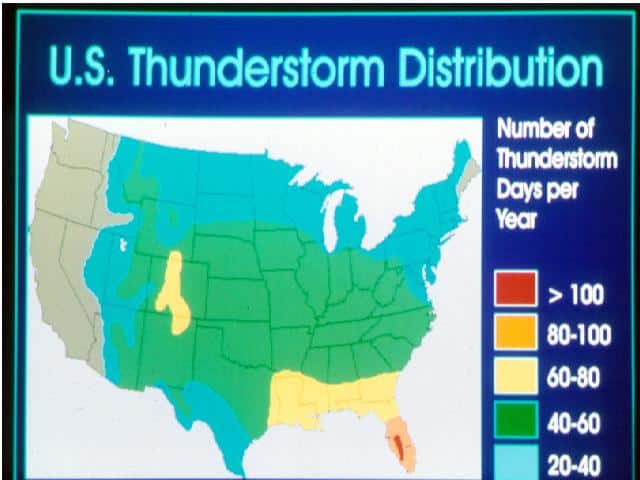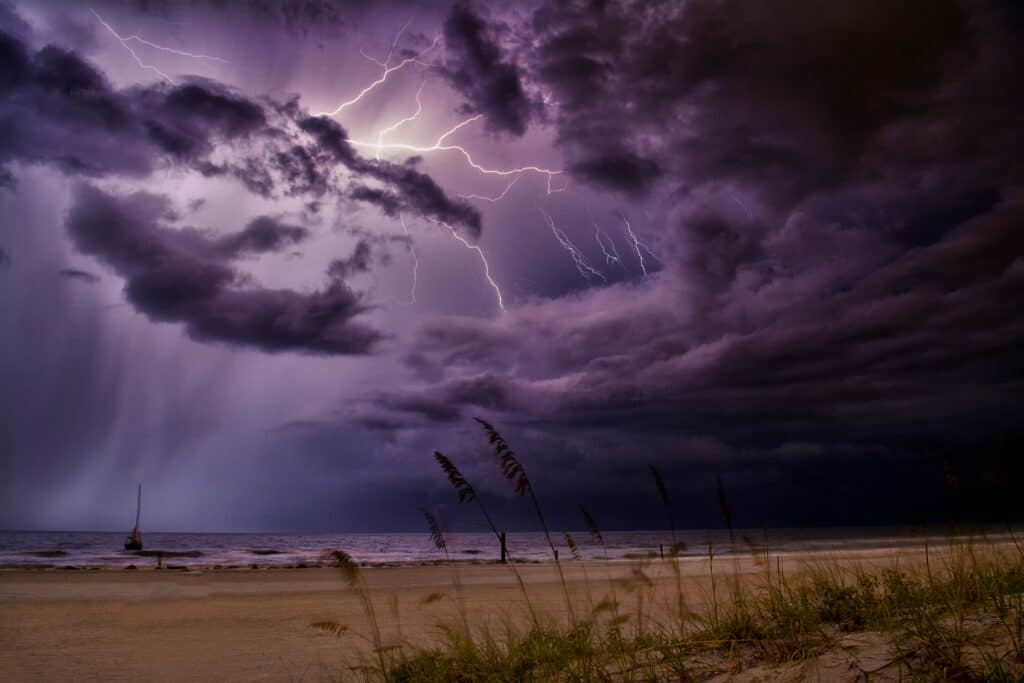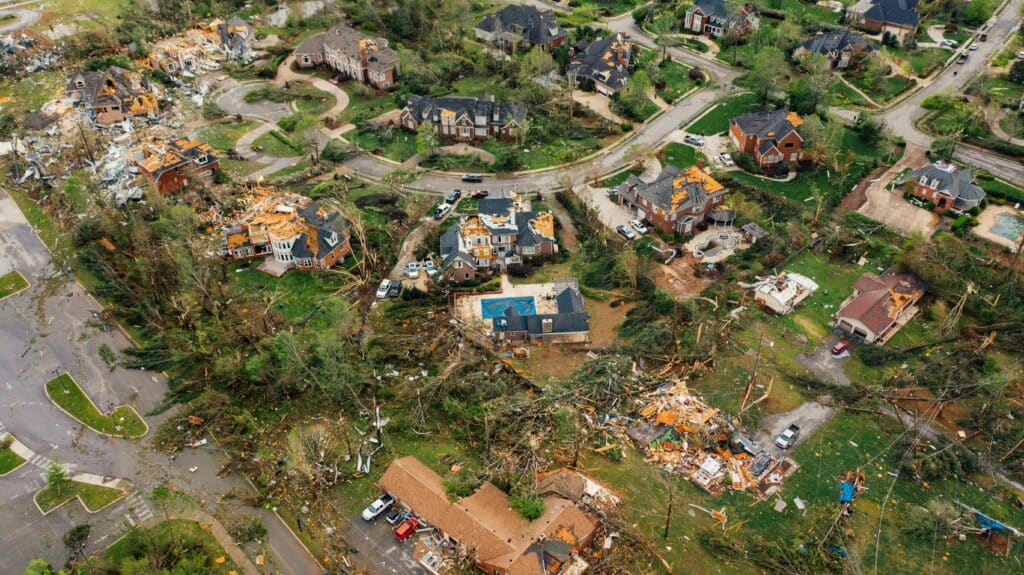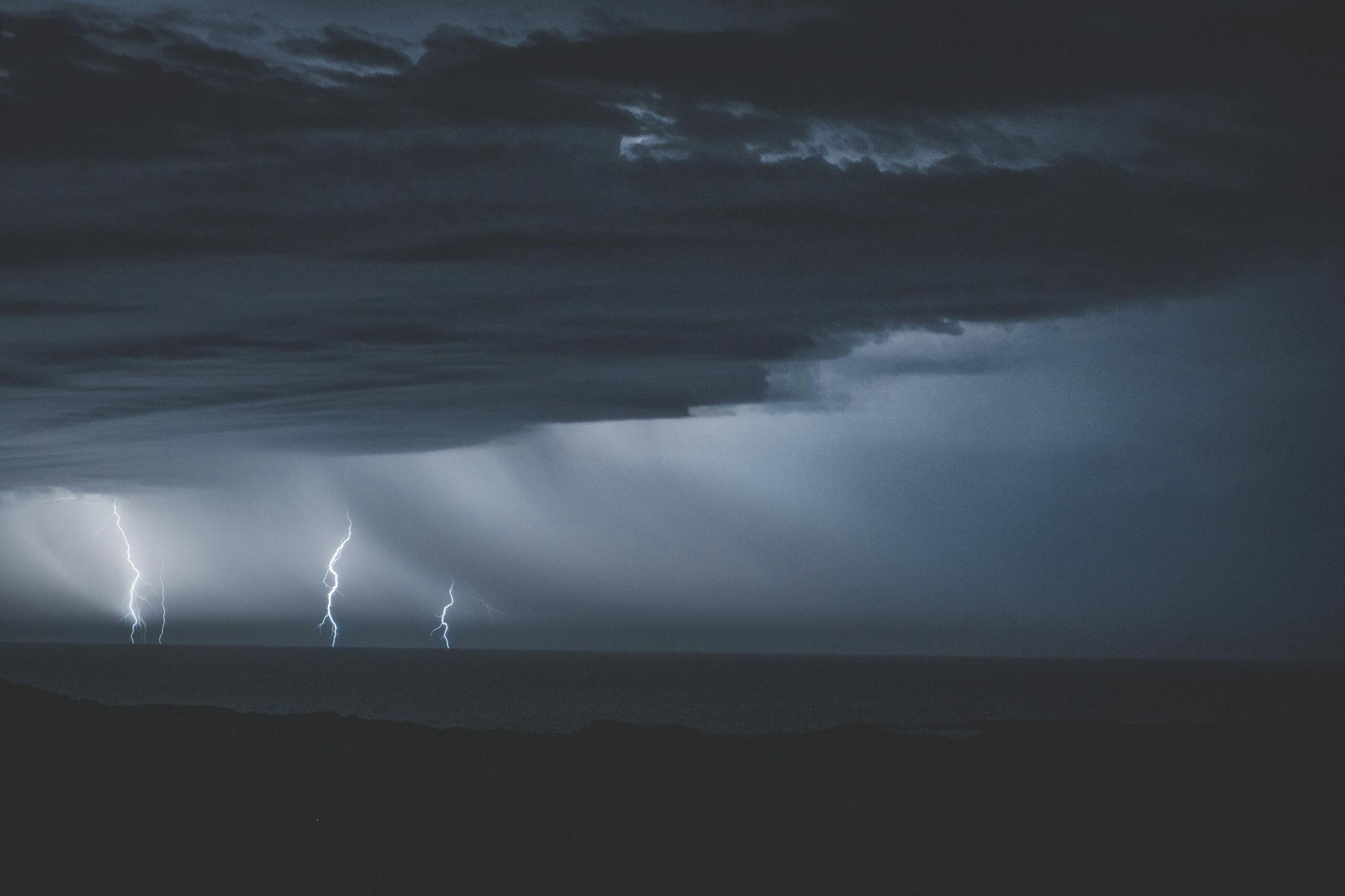Thunderstorms are a force of nature, but that doesn’t mean you have to be at their mercy. We want to keep your property safe during a storm, our guide shows you the steps, along with some insurance tips to help you recover in case the worst happens.

West central Florida is the thunderstorm capital of the U.S., experiencing more than 100 per year on average (see graph). Key West, while less active, still averages 64 thunderstorm days annually, with August and July as the peak months. Notably, thunderstorms can occur in Key West during any month. 1
Know Your Weather Alerts (What is a Watch, Advisory, Warning?
| Watch | Advisory | Warning |
| The possibility of a storm exists, so use this time to prepare for what is heading your way. Tune in to receive weather alerts. | A storm is happening or imminent, with potentially dangerous conditions. | The storm is posing a serious threat to life and property. Take shelter immediately and follow local safety instructions. |

Take Proactive Steps Before the Storm
Eliminate Your Chances of Risk: Maintain your tree limbs, clean gutters, bring in outdoor furniture, and consider boarding up windows in high-risk areas. These steps can prevent damage from wind, hail, and debris.
Create a Safe Space: Identify a sturdy, central room in your home or office to shelter in during the storm. This will likely be a basement or an interior room on the lowest floor, with minimal windows around.
Stay in Touch and Aware: Ensure your phone is charged and you can receive emergency alerts, even if the power goes out.
Plan for All: Create a communication plan with family members and consider having someone check on elderly neighbors or those with disabilities.
Prepare an Emergency Kit: Include essentials like non-perishable food, water, first-aid supplies, a flashlight, and a battery-powered radio.
Review your Policies: Review your insurance policies to understand your coverage for storm damage. This includes wind, hail, lightning, and potential flooding. We can help you with this.

Protecting Yourself During a Thunderstorm
Seek Shelter Immediately: If you hear thunder, go inside a sturdy building and stay away from windows and doors.
Follow Emergency Alerts: Stay informed and follow any instructions provided by local authorities.
Avoid Electrical Hazards: Don’t use landline phones or touch plumbing as electricity can travel through them during a storm.
Beware of Flooding: Stay away from flooded areas and never drive through standing water. Just a few inches of moving water can be dangerous for your vehicle.

Recovering After a Thunderstorm
Safety First: Stay away from downed power lines and other electrical hazards. Report any dangers to the authorities.
Document Damage: Take pictures and videos of any damage to your property, including your car.
Contact Your Insurance Company: File a claim with your insurance company promptly. Your policy details will guide you through the claims process.
Seek Temporary Shelter: If your home is unlivable, contact the Federal Emergency Management Agency (FEMA) for information on temporary housing options. Find your nearest shelter.

The Importance of Insurance
Having the right insurance coverage can make a significant difference after a storm. Here’s how your insurance can help:
Dwelling Coverage: Repairs or rebuilds to your office and home in case of damage caused by wind, hail, or lightning.
Personal and Commercial Property Coverage: Replaces damaged or destroyed belongings within the home and business property.
Additional Living Expenses: Covers the cost of temporary housing if your home is uninhabitable due to storm damage.
Remember: By taking preventative measures and having the right insurance, you can minimize the impact of a thunderstorm on your property and ensure a smoother recovery process. Having a household or office communication plan in the event of a disaster is crucial, we can help you find the best solutions available.
Want a personalized quote for free? Speak with one of our weather experts today!
Sources
“Thunderstorm Hazards,” National Oceanic and Atmospheric Administration (NOAA) – https://www.weather.gov/key/tstmhazards
“Severe Weather 101 – Thunderstorms,” NOAA National Severe Storms Laboratory (NSSL) – https://www.nssl.noaa.gov/education/svrwx101/thunderstorms/
Photos available via Pexels.com.


